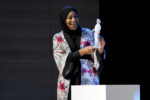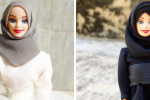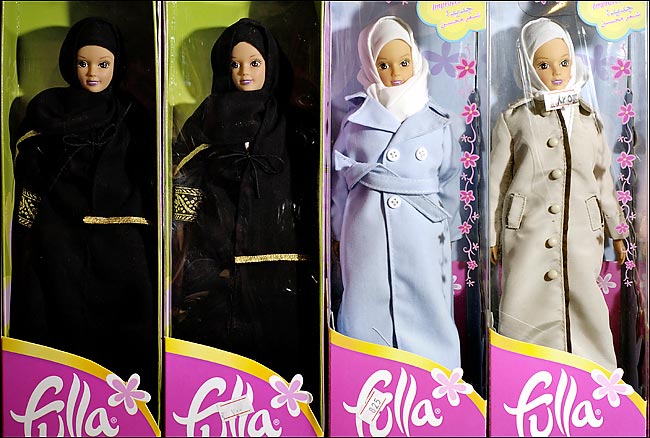A recent decision to auction a “Burqa Barbie” for a Save the Children fundraising campaign (“to educate children in conflict areas around the world”) has been making its rounds online this past week. Of the 500 different Barbies designed by Eliana Lorena, it was only natural for the culturally inappropriate (Islamic!) “Burqa Barbie” to be singled out as a cause for uproar. (I was interested in seeing what the other 499 Barbies looked like, as I find cultural dress from around the world fascinating to look at, but seem unable to find any site that describes the other Barbies…)
Lorena proclaims in The Daily Mail (the source unfortunately seems to have first exposed the existence of Burqa Barbie): “I know Barbie was something seen as bad before as an image for girls, but in actual fact the message with Barbie for women is you can be whatever you want to be.” I have a hard time coming to terms with girls identifying with any type of Barbie as someone they might aspire to, due to the fact that it promotes a self-image that is unrealistic and unhelpful towards contributing to girls’ self-esteem. For girls, however, who are inclined to identify with Barbies, I think that having a culturally-appropriate Barbie can be self-affirming (I, for instance, still have my Indian Barbie boxed for safekeeping, whose braid, fascinatingly, is thicker than the width of her arm…).
Sara Elghobashy of elan notes the inflated outrage over Burqa Barbie:
Outrage over Burqa Barbie would be justified if she came with a Taliban Tarek complete with a bag of stones that are ready to be used if Burqa Barbie falls in love with Malibu Ken, but that’s not the case. The doll was meant to represent Afghani culture and was never intended to be political, though many are interpreting Lorena’s decision to outfit Barbie in a burqa as just that.
Everyone from NOW to Fox News has been foaming at the mouth with rage over the doll, and every concern, ranging from fake feminist concerns to terrorism issues, has been played out.
Over at vs. the Pomegrante, Joseph Shahadi writes an excellent critique of the negative portrayal of Burqa Barbie. Shahadi concludes:
The entire spectrum of western politics is invested in the silence of Muslimahs…whose common concern, the overriding threat of super-violent, oppressive maleness emanating from the East, unites them. So in the end, this conflict over Barbie dolls is not about Arab and Islamic women at all….Rather, this–like almost everything else– is really about the threatening specters of Arab and Islamic boogeymen, who must be conquered, controlled and/or destroyed to preserve “our” way of life.
While I agree with Shahadi’s conclusion that “oppressive maleness” and “threatening specter of Arab and Islamic boogeymen” underlies the overwhelming ill sentiment towards Burqa Barbie, I disagreed with his dismissal of the conflict to be “not about Arab and Islamic women at all”. By continuing to focus on Muslim women’s dress as a form of oppression, Muslimahs continue to be judged on their faith according to their dress in a way that men never will be–by both those who are of the faith and those who are not, and hence does in fact make it all about Muslim women.
I find myself wondering, why is this news? Burqa Barbie, in the end, merely represents a form of cultural dress (albeit tinged with a contentious political history and a little misrepresented in lime green and radioactive orange), a one-time design to be auctioned for charity. Not every Muslim woman will necessarily identify with her culturally, but that does not necessarily mean that her existence as a form of cultural expression is wrong and degrading to women.
Barbie herself symbolizes an unrealistic portrayal of women, and some of her other forms of cultural clothing should also be seen as degrading and oppressive. Instead of singling out a single form of cultural dress that is “oppressive” and “degrading” towards women, we should look at the myriad of clothing styles that contribute to degrading portrayals of women (even those in Western cultures) so that girls everywhere can identify with culturally-relevant forms of dress that can be seen as liberating.



